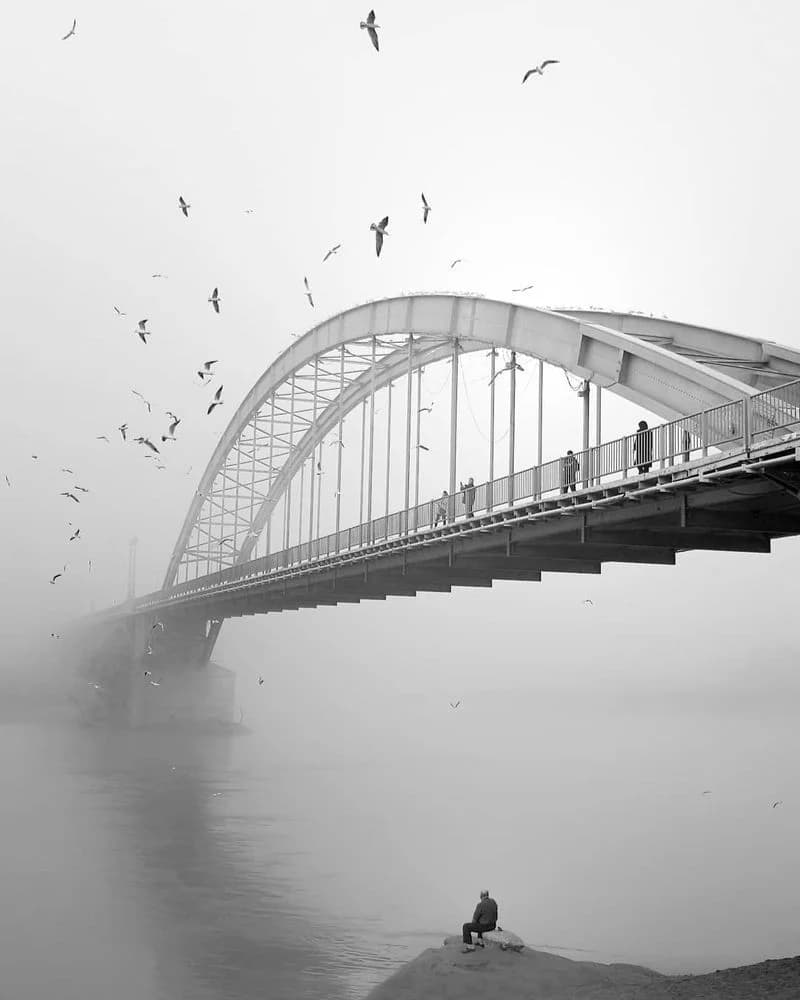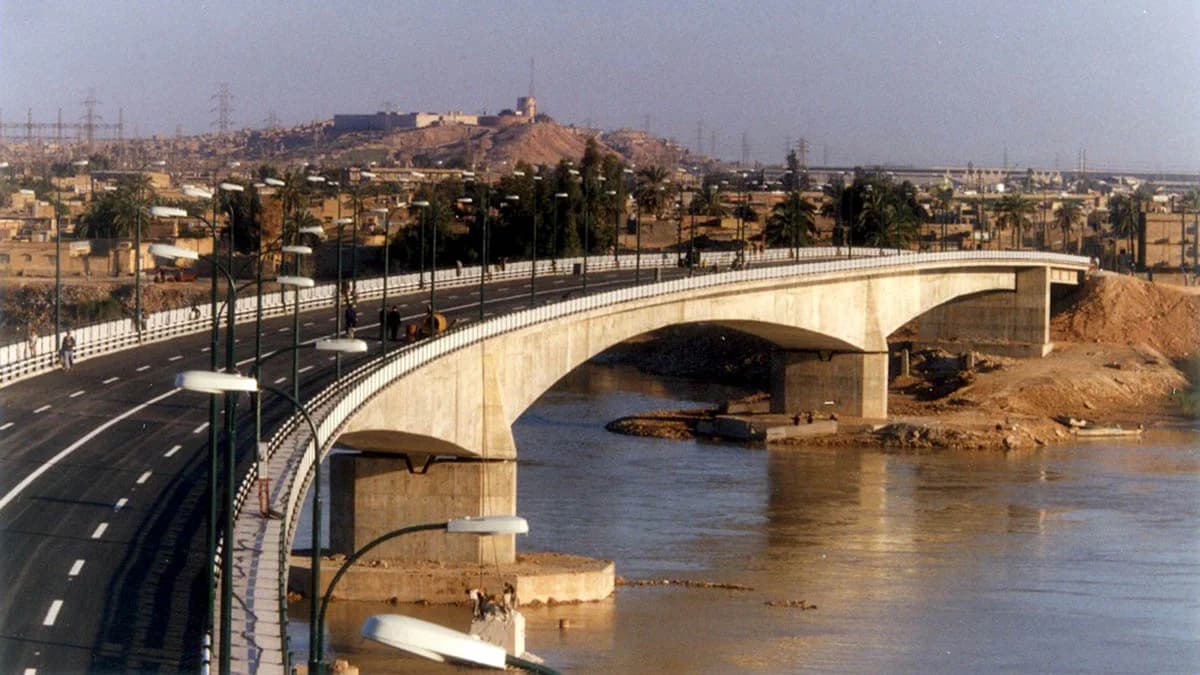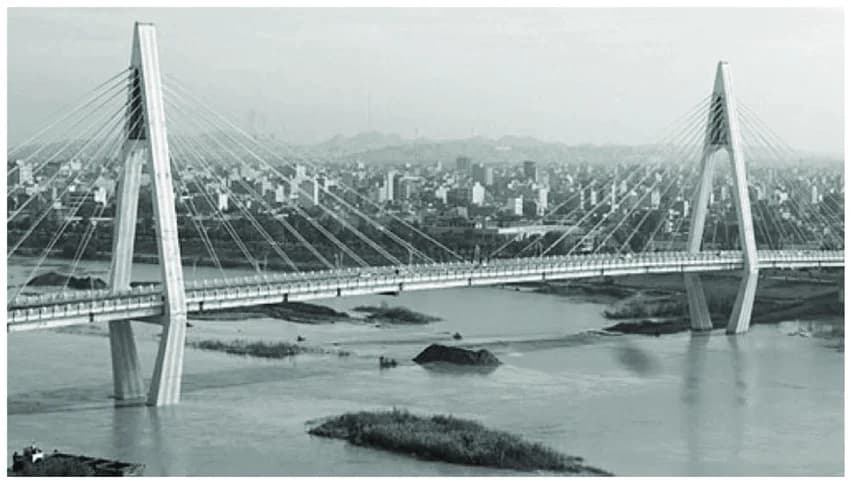The city of Ahvaz is built on the banks of the Karoun River, the largest river and the only navigable waterway in Iran. As one of the hottest cities in Iran, Ahvaz experiences summers with a temperature of 45-50 degrees and is often subject to sand and dust storms. Ahvaz is the most populous city in Khuzestan and one of the most important economic and industrial centers in Iran. The National Iranian South Oil Fields Company and National Iranian Drilling Company turned the city into one of the most significant industrial centers in Iran. The Karun River divides Ahvaz into east and west parts.
Karun River & Ahvaz Bridges
As the largest & wateriest river in Iran, the Karun River was called Kouhrang in ancient inscriptions. The first human civilization formed along the Karun River. As the longest river, with a length of 950km, it’s the only river in Iran with the capability of shipping to some ports. Originating from Zardkooh Mountain in Chaharmahal & Bakhtiari Province, the river provides Ahwaz with its drinking water.
Ahvaz is known as the city of bridges for the 9 bridges that have been built over the Karoun River namely Pol-e Sefid (White Bridge), Black Bridge (Victory Bridge), Naderi Bridge (Fourth Bridge), and Gofteguye Tammadonha (Dialogue of Civilizations Bridge) which connect the eastern and western Ahwaz. One of the most important tourist attractions in Ahwaz is its bridges.

Black Bridge (Railway bridge)
As the first and oldest bridge in Ahvaz City, the Black Bridge was constructed in 1919 as a railroad. Due to the black color of the bridge, it was renowned as Black Bridge or Pol-Siah. The bridge connects Imam Harbor in the southeast of the province and the customs harbor. During the Second World War, the bridge was used for transporting provender, forces, and ordnances to the Russian army. Due to the important effects of the bridge on the Allied victory, the bridge was called the Victory Bridge.

The white bridge (Suspension Bridge)
The suspension bridge is one of the most beautiful bridges of Ahwaz built by a German family on the beautiful river of Karun. As one of the city’s symbols, the white bridge is made of metal. Construction began in the early 1900s, but the German engineer died after raising only one of the two arches of the bridge, later his wife completed the project in 1937. Iran’s first cantilever bridge and the 4th cantilever bridge in the world is one of the 9 bridges established on the Karun River in Ahvaz.

Third Bridge
The construction of the Third Bridge started in September of 1967 and was done by 1970. Connecting Shahid Bandar Square and north Kianpars, the bridge plays a transit role to the Ahvaz-Tehran railroad.
Fourth bridge (Salman Farsi Bridge)
Constructed in 1975, the Fourth Bridge joins Salman Farsi Street, the Takhti area, Saat Square, and Molavi Square.
Fifth bridge
The fifth bridge was built in 1996 in order to decrease Ahvaz's traffic load. This bridge connects Jomhouri Square, south of Shariati Street, Kout Abdullah Road, Daneshgah Square, and Lashkar Abad.
Sixth bridge (Steel bridge)
Also known as Sanaye-e Foolad Bridge, it is located near Cheneibeh village on the best banks of Karoun. Working as the main road for industrial complexes which are placed on either side of the Karoun river. Construction began in 2004 and was completed in 2007.
The seventh bridge
The seventh bridge connects Towhid Blvd and Shahid Chamran Street. With a length of 490 meters, this bridge has the longest and most beautiful artificial waterfall in the Middle East. Fountains are on both sides and they are lightened by colorful lamps during the night.

Eighth bridge (Cable bridge)
The eighth bridge was constructed in order to reduce the traffic loads of Salman Farsi and 5th bridge. The construction of this bridge began in 2006.

Ninth Bridge
The ninth bridge of Ahvaz is 495 meters long and 12.6 meters wide. This bridge begins at Shahrvant Meli Rah Park and ends at Wahabi Street. This bridge was constructed in order to decrease the traffic load of the Third Bridge. After 10 years of construction, the bridge was opened in 2018, but soon after it was closed in order to repair the bridge’s shortcomings. Therefore, the traffic load is still an issue in this area.
Conclusion
Ahvaz, the capital of Khuzestan province in Iran, is often referred to as the "City of Bridges" due to its nine distinct bridges that cross the Karun River. Each bridge, from the historic Black Bridge to the modern White Bridge, has its unique architectural style and story, contributing to the city's rich cultural and historical tapestry. The bridges not only connect the eastern and western parts of the city but also symbolize the unity and diversity of Ahvaz. Despite the challenges faced during the Iraq-Iran war, Ahvaz has managed to rebuild and maintain its reputation as a city of peace and bridge-building. Today, Ahvaz continues to be a vibrant city, especially at night when the bridges light up, adding to the city's charm and allure.